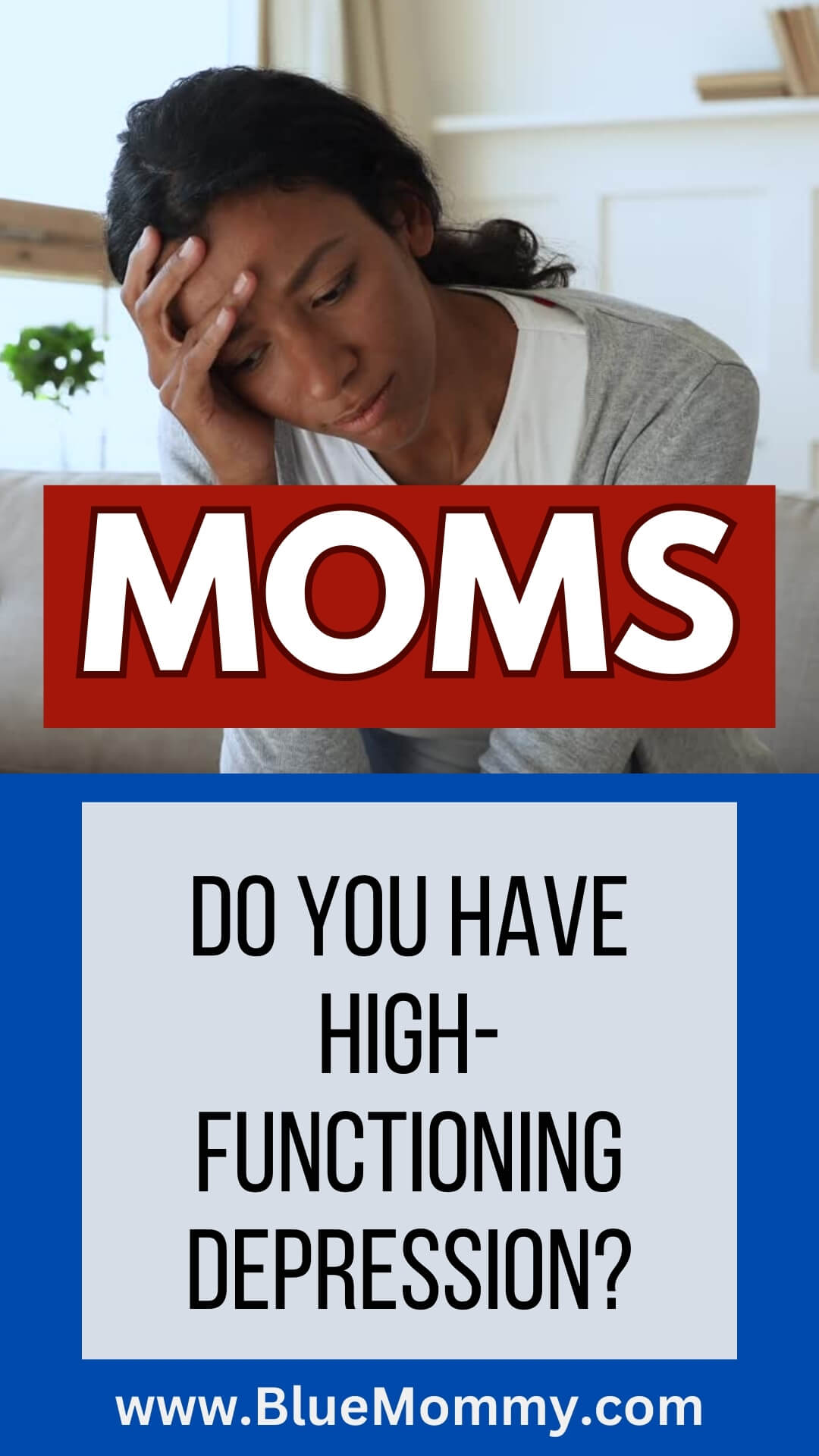Before I heard the term high-functioning depression, I used to tell people that I just always felt some degree of sadness, made worse during times of stress (frequent as a working mom with a demanding career), with episodes of worsened depression with crying episodes, difficulty concentrating and planning things, and withdrawal from others.
High-functioning depression, however, is the term I like to use, because I believe that it describes my life most accurately and if you are one of my guests here, I’m sure you can relate to what I’m saying. I was the high school student, university student, employee, mother, and wife who would “show” up for life events, no matter how mentally awful I was feeling on any particular day. Every day, I got myself out of bed, although I must admit that I spent many more hours sleeping than I required just because sleeping was a great way to escape reality and the sadness.
What you need to know is that high-functioning depression is not a medical term that your doctor or therapist will use. It is not a diagnosis that you’ll find in the Diagnostic and Statistical Manual 0f Mental Disorders. Instead, the terms that the professionals use are the diagnoses of Major Depressive Disorder or Persistent Depressive Disorder (formerly called Dysthymia). I don’t want to bore you with all these medical terms, but knowing this can help you as you navigate your own feelings and life dealing with this. Dysthymia was the term used for years, by the psychiatric healthcare community, to describe an unrelentless, chronic form of depression that comes on gradually and subtly. This is what I would say I have, but I like the non-medical term of high-functioning depression better. 😉
Honestly, I have never seen a psychiatrist for my form of depression. My primary care doctor is the only one I’ve seen for my diagnosis of “depression” – whatever that means – and my prescription of Citalopram/Celexa. Basically, I see it as a disorder on a spectrum, much like autism. Whatever term you want to use, you may notice that you have been feeling sad for as long as you can remember, and can describe your mood as having been “blue” most of the time. You may think that being sad is the personality you were awarded at birth. In the past, it was considered a less severe illness than major depression, because people with dysthymia rarely have to be hospitalized. In fact, it was considered to be more of a pessimistic personality type.
Fortunately, it is now recognized as greatly impacting the lives of those it touches. Many people with persistent feelings of depression have been lacking full enjoyment in life for years.
Taken from the Mayo Clinic website:
“Persistent depressive disorder is a continuous, long-term form of depression. You may feel sad and empty, lose interest in daily activities and have trouble getting things done. You may also have low self-esteem, feel like a failure and feel hopeless. These feelings last for years and may interfere with your relationships, school, work and daily activities.”
Further symptoms of Persistent Depressive Disorder include:
- Sadness, emptiness or feeling down.
- Loss of interest in daily activities.
- Tiredness and lack of energy.
- Low self-esteem, self-criticism or feeling you’re not capable.
- Trouble focusing clearly and trouble making decisions.
- Problems getting things done well and on time.
- Quickly becoming annoyed, impatient or angry.
- Avoidance of social activities
- Feelings of guilt and worries over the past
- Poor appetite or overeating
- Sleep problems
- Hopelessness
How is the diagnosis of Persistent Depressive Disorder made?
In adults: At least two of the above symptoms plus two years of depressed mood
In children and adolescents: At least two of the above symptoms plus one year of depressed mood or irritability
Who is at risk of dysthymia?
- We, women, are!
- People with a family history of it
- Individuals with another health problem
- People who abuse alcohol or other drugs
How does Persistent Depressive Disorder affect the daily lives of us moms?
- It makes it difficult to establish and maintain relationships
- It results in withdrawal and social isolation
- It may hold an individual back from believing they deserve more in life
- Decreased productivity overall at work and at home
- It can result in suicidal thoughts
How can Persistent Depressive Disorder be treated?
- Antidepressants – They have been found to be very effective in individuals with this chronic, low mood
- Counseling/Psychotherapy – Sometimes, psychotherapy may be tried before medications, however it often can be used in conjunction with antidepressants. As the antidepressant medications take effect, and improve the mood of the dysthymic individual, psychotherapy can provide instruction on how to function without sadness, and how to find the confidence, self-esteem, and relationships that were lacking previously.
In conclusion, whatever term you want to call it, whether it’s high-functioning depression or persistent depressive disorder, it needs to be recognized for the chronic, debilitating depressive illness that it is. Just because you appear to be functioning somewhat normally, doesn’t mean that you are doing fine. If you have been struggling with a depressed, low mood for some time, it’s time to seek treatment.

